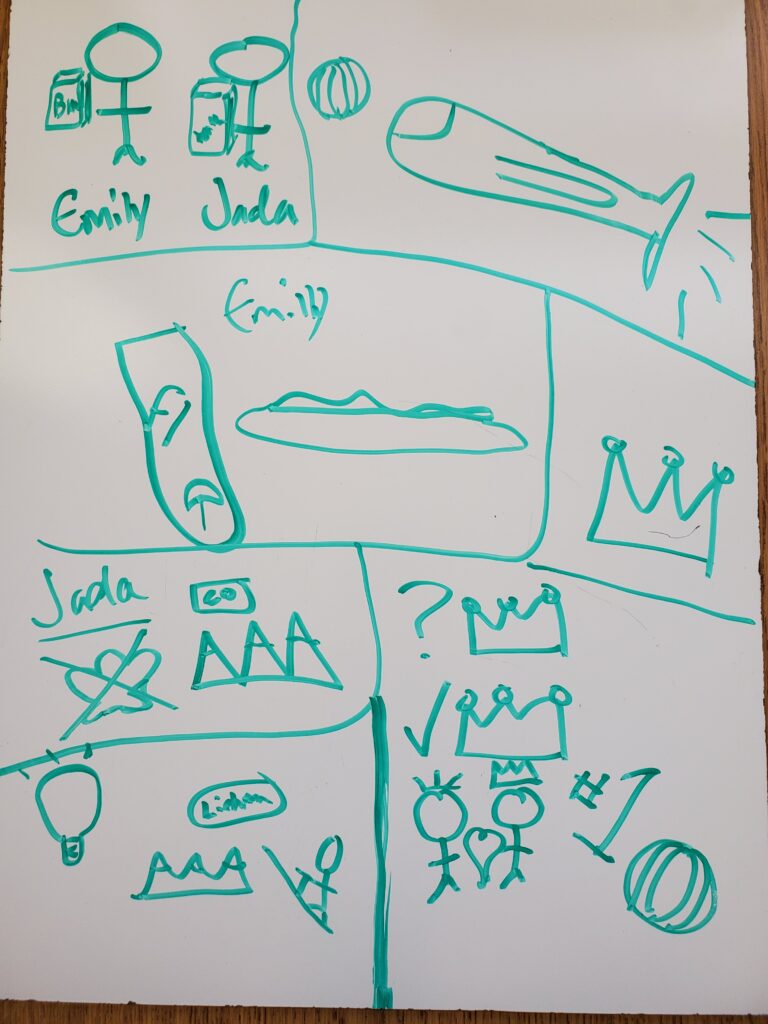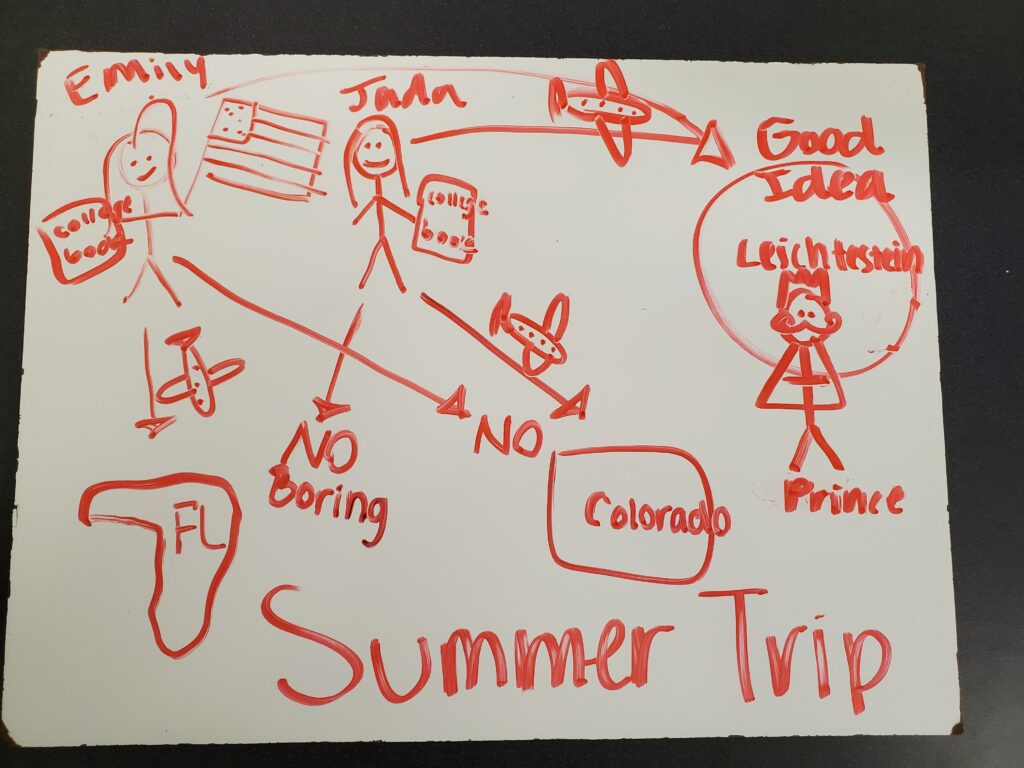Listen, Draw, and Discuss

Listen, Draw, and Discuss
This activity is similar to Read, Draw and Discuss, however it has a twist. You’ll notice that it is “Listen” and not “Read” in the title. It is an excellent way to scaffold support for listening comprehension with students. In this activity, students are not only supported in their engagement with listening and comprehending the language, but they also get the benefits of benefits of drawing, including recall, concentration and creativity. (Find out more about the benefits of drawing in class here: Drawing a Beneficial Conclusion)
To Start: I chose level-appropriate story (with a listening component).
- Note: In this case I used a story from the Voces Digital German curriculum – “Sommeferien-Summer break”. I used the audio from the story. However, you do not need to have a recorded audio for the story / text. You can use any level-appropriate text and read it out loud to your students (if it doesn’t have an audio component.)
- I would advise that you keep the audio to no more than 2-3 minutes, especially if you want them to do a retell of the story afterwards. (If you are just having them draw to show you their comprehension of the story/text, it can be a bit longer.)
In Class:
1. Students had a whiteboard, marker, and rag/eraser.
2. We established meaning of our target structures and vocabulary.
- You can use any means you feel are appropriate and effective for establishing meaning, for example: TPR, PQAs, etc.
3. I explained that they would have to draw the story as they listened to it. (I would stop it at intervals to give them time to draw.)
- Note: I didn’t give them a defined parameter, like “You will need 10 pictures” or something like that. I told them to draw as many as they needed to retell the story. I did encourage them to draw in a sequential manner and/or use arrows to helps show the order of the story.
4. I played just the audio of the story (in German). I stopped it about every 30 seconds or so and gave the students a chance to draw the story.
- Note: The length between stops depends on their abilities. You want to error on the side of shorter, rather than longer.
5. When we were finished, I played the audio a second time, but this time without stopping. I told the students to listen to it in its entirety and at the end to finalize any illustrations on their whiteboards (and prepare for a retell).
- Note: You can always experiment with how you play the audio. For example, you can play it in its entirety first and just have students listen to it and familiarize themselves with it. Then, you can play the audio and stop it and have students do their drawings.
6. I then had students show me their drawings by holding up their boards. I looked at their whiteboard pictures as a comprehension check.
- Note: Steps 7 & 8 are optional. You can choose to do them or not. If you choose not to do them, skip to step 9.
7. (OPTION) Then, I told the class to show another person their whiteboard picture and retell – in German – the story with their pictures.
- Note: I asked them to point to what they had drawn as they retold the story.
- Also, if you are working with beginning language learners, you can have them retell the story in the L1. It is a great way to truly know if they comprehended what they heard.
8. (OPTION) Then, we repeated step 7 a couple of times with different partners. (The students enjoyed sharing their work and seeing the work of others.)
9. I also drew on a whiteboard. After steps 7 & 8 – if you chose to do a student retell – I held mine up and retold the story using my details. We then discussed the story using our boards.
- Note: I encourage you to still do this step in any case, even if you do not do steps 7 and 8.
10. Lastly, in this case, I was able to project the text. I projected the text and played the audio at the same time. I had the students follow along with the text as they listened to the audio. (I felt this reinforced the text and audio and helped students see that they comprehended the audio.)
- Note: I offered any students the chance to come up in front of the class and retell the story using the pictures on their board. (I don’t force students to do this!)
Reflections:
This can be a powerful activity with students. However, I cannot stress enough that it has to be level-appropriate and the students can understand 90%+ of the story/text. Also, do not forget to work with the target structures beforehand!
When you use an appropriate story with this activity, students really feel a sense of confidence – and this can be a good motivator in the classroom! I also feel that students get a lot out of doing this activity. Yes, they enjoy the drawing part of it, but you’ll notice that as they draw they tend to focus on listening and want to comprehend the story; they want to draw a good story! In my experience, this is one of the most effective and beneficial listening activities that we do.
Note: Below are pictures from my students with their details. (This is from a German 1 class.) The story went like this:
Emily and Jada are university students. They are talking about what they want to do (and where they want to go) during the summer break. They discuss some options, like going to Florida, Colorado or the small German-speaking country of Liechtenstein. They decide to go hiking in the Alps in Liechtenstein. Since there is a prince in Liechtenstein, they joke about meeting the prince and becoming a princess.
Note: In the second picture, the student chose to also incorporate words – and English at that. That is okay! There is no problem with it! The student showed her comprehension of the story!

